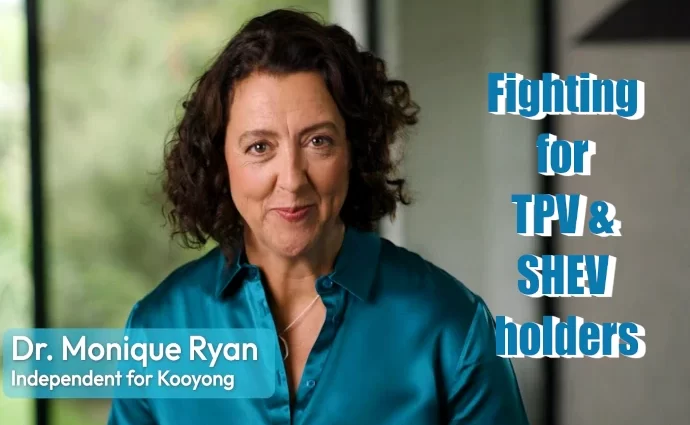TPV & SHEV holders still in limbo after six months of Albanese Government in office
Skilled visa applications for teachers and nurses are now being assessed in just three days after a change to how skilled visas are prioritised, says an SBS news item.
The Department of Home Affairs has stopped using the 2020 Priority Migration Skilled Occupation List (PMSOL) to rank skilled visa applications. Understandably it is now seen as outdated and no longer reflects the critical workforce shortages recorded and felt across Australia.
The list included occupations such as engineers, chefs, accountants, psychiatrists, programmers, pharmacists, healthcare workers such as nurses and doctors, but not teachers.
The Department of Home Affairs says the new Ministerial Direction No. 100
, which directs department staff to perform certain actions, now prioritises visas in the health and education sectors.
Although SBS news quotes a spokesperson’s claim of 3 days to assess applications of teachers and nurses, the Home Affairs website does not give any indication of that sort. It just has global processing times indicated.
The Albanese Labor Government will meet its commitments. We won't treat people like political footballs like the Liberals did through almost a decade of cruelty and neglect. pic.twitter.com/87yriNZif1
— Andrew Giles MP (@andrewjgiles) December 15, 2022
The Home Affairs website says processing priority will be given to holders of eligible passports as not all visa streams are open to every nationality.
And within each category, priority is given to applicants located outside Australia for provisional and permanent skilled visa applications.
The new criteria applies to these skilled visas:
- Subclass 124 (Distinguished Talent)
- Subclass 186 (Employer Nomination Scheme)
- Subclass 187 (Regional Sponsored Migration Scheme)
- Subclass 188 (Business Innovation and Investment) (Provisional)
- Subclass 189 (Skilled – Independent)
- Subclass 190 (Skilled – Nominated)
- Subclass 191 (Permanent Residence (Skilled Regional))
- Subclass 457 (Temporary Work (Skilled))
- Subclass 482 (Temporary Skill Shortage)
- Subclass 489 (Skilled – Regional (Provisional))
- Subclass 491 (Skilled Work Regional (Provisional))
- Subclass 494 (Employer Sponsored Regional (Provisional))
- Subclass 858 (Global Talent)
- Subclass 887 (Skilled – Regional)
- Subclass 888 (Business Innovation and Investment (Permanent).
Also read: A re-elected Coalition government to charge criminals for detention
The government is also undertaking a comprehensive review of Australia’s migration system. An interim report is expected by the end of February 2023. The government may finalized its strategy and direction by late March/April next year.
The Grattan Institute is recommending allowing any employer to permanently sponsor migrants on more than $85,000 per year
while making all migrants earning over $70,000 eligible for temporary sponsorship.
“Permanent employer sponsorship should be available for workers in any occupation earning above $85,000 a year. This would better target migrants with valuable skills, simplify and speed up the sponsorship process, offer clearer pathways to permanent residency for temporary sponsored workers and recent graduates, and boost Australian government budgets by $125 billion over the next three decades, ” the institute is recommending the government to consider.
“Temporary sponsorship should be available for migrants in any occupation who earn more than $70,000 a year. Labour-market testing should be abolished and sponsorship made portable so that migrant workers can more easily switch employers.
“The government should avoid expanding less-skilled migration solely for the purposes of work, especially as many workforce shortages will ease now the borders are open. Expanding less-skilled migration — especially for workers on temporary visas — could undercut the wages of low-paid Australians and further increase exploitation. And it could also erode public trust in our migration program and amid concerns about Australia becoming a `guest-worker’ society” it further recommends.
Whether the processing is as fast as three days is a question that remains to be answered by some potential nurse or teacher landing in Australia and affirming it, it is no doubt that the government seems to be speeding up with its finetuning of the system.
For those who may be considering applying to bring their parents down under, the focus of the migration policy is likely to significantly shift away from accommodating older migrants, onto skilled migrants.
Similar Posts by The Author:
- BAPS temple vandalism critic Canadian MP Chandra Arya on Pannu’s radar
- Dutton asks Albanese to sack Andrew Giles
- Victorian Liberals and Nationals demand Royal Commission into CFMEU misconduct under Labor
- Peter Khalil welcomes more funding for emergency accommodation and support for women and children in Wills
- Dogged Vic government powering ahead with the Suburban Rail Loop

